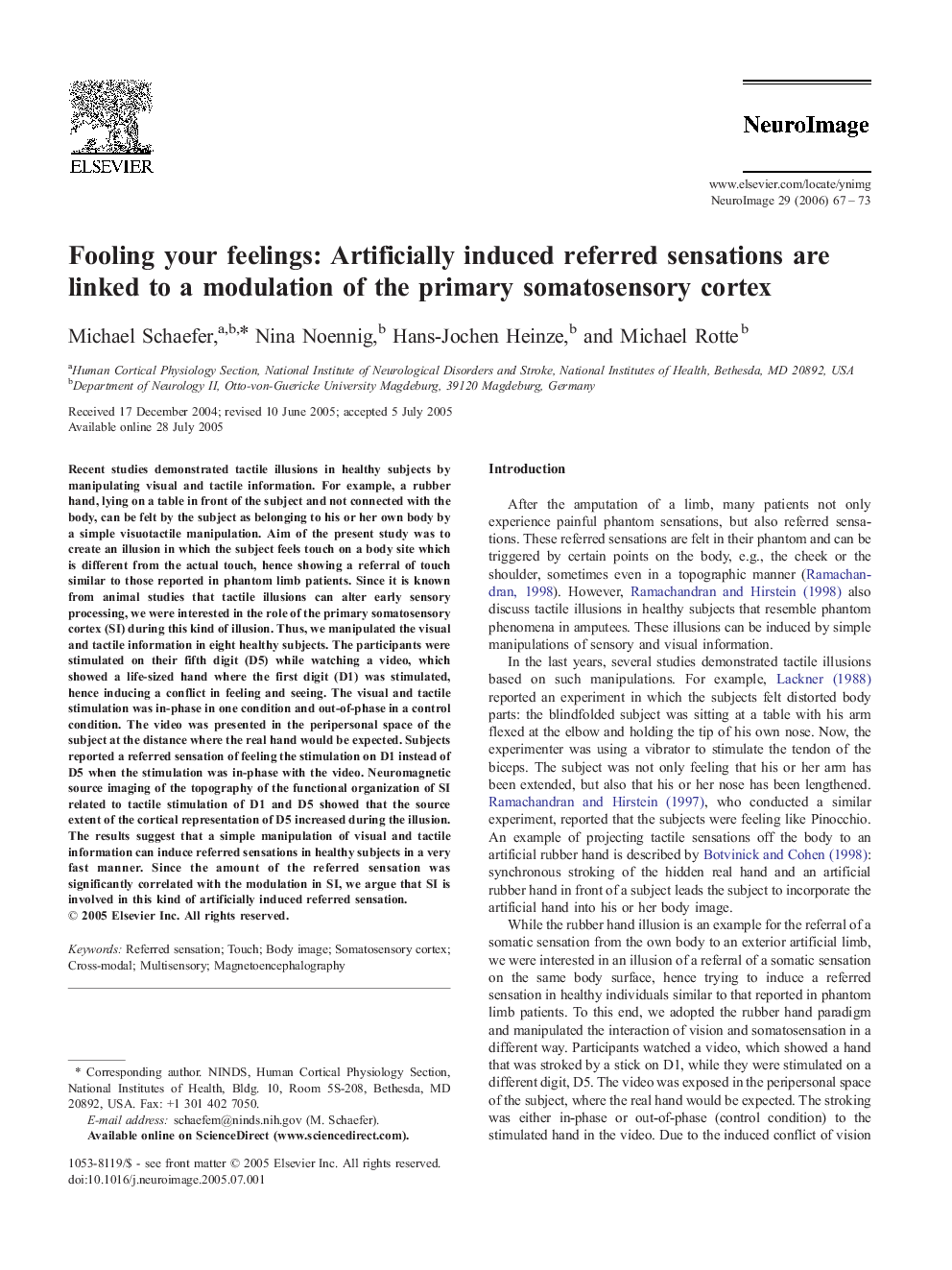| Article ID | Journal | Published Year | Pages | File Type |
|---|---|---|---|---|
| 3074593 | NeuroImage | 2006 | 7 Pages |
Recent studies demonstrated tactile illusions in healthy subjects by manipulating visual and tactile information. For example, a rubber hand, lying on a table in front of the subject and not connected with the body, can be felt by the subject as belonging to his or her own body by a simple visuotactile manipulation. Aim of the present study was to create an illusion in which the subject feels touch on a body site which is different from the actual touch, hence showing a referral of touch similar to those reported in phantom limb patients. Since it is known from animal studies that tactile illusions can alter early sensory processing, we were interested in the role of the primary somatosensory cortex (SI) during this kind of illusion. Thus, we manipulated the visual and tactile information in eight healthy subjects. The participants were stimulated on their fifth digit (D5) while watching a video, which showed a life-sized hand where the first digit (D1) was stimulated, hence inducing a conflict in feeling and seeing. The visual and tactile stimulation was in-phase in one condition and out-of-phase in a control condition. The video was presented in the peripersonal space of the subject at the distance where the real hand would be expected. Subjects reported a referred sensation of feeling the stimulation on D1 instead of D5 when the stimulation was in-phase with the video. Neuromagnetic source imaging of the topography of the functional organization of SI related to tactile stimulation of D1 and D5 showed that the source extent of the cortical representation of D5 increased during the illusion. The results suggest that a simple manipulation of visual and tactile information can induce referred sensations in healthy subjects in a very fast manner. Since the amount of the referred sensation was significantly correlated with the modulation in SI, we argue that SI is involved in this kind of artificially induced referred sensation.
